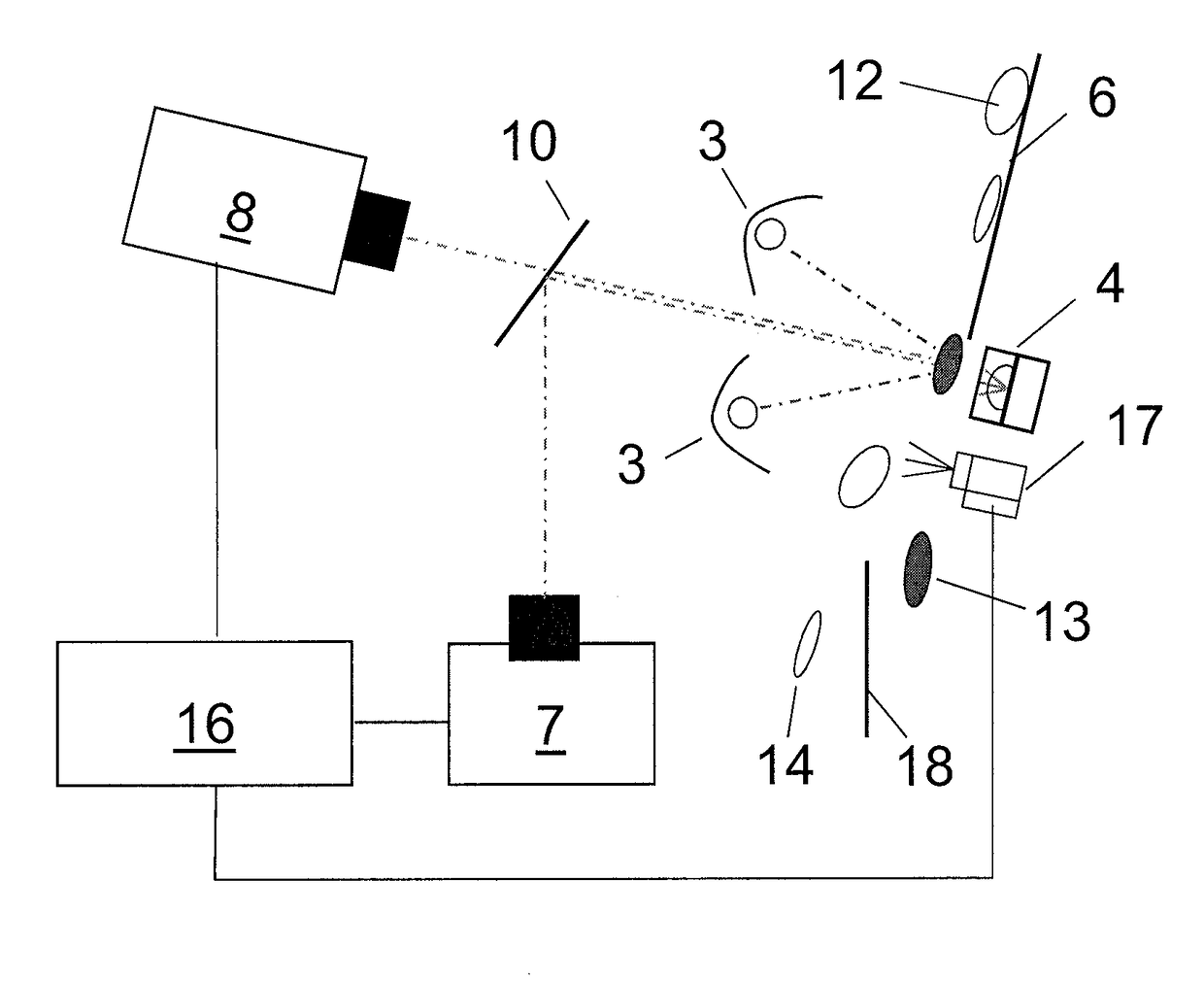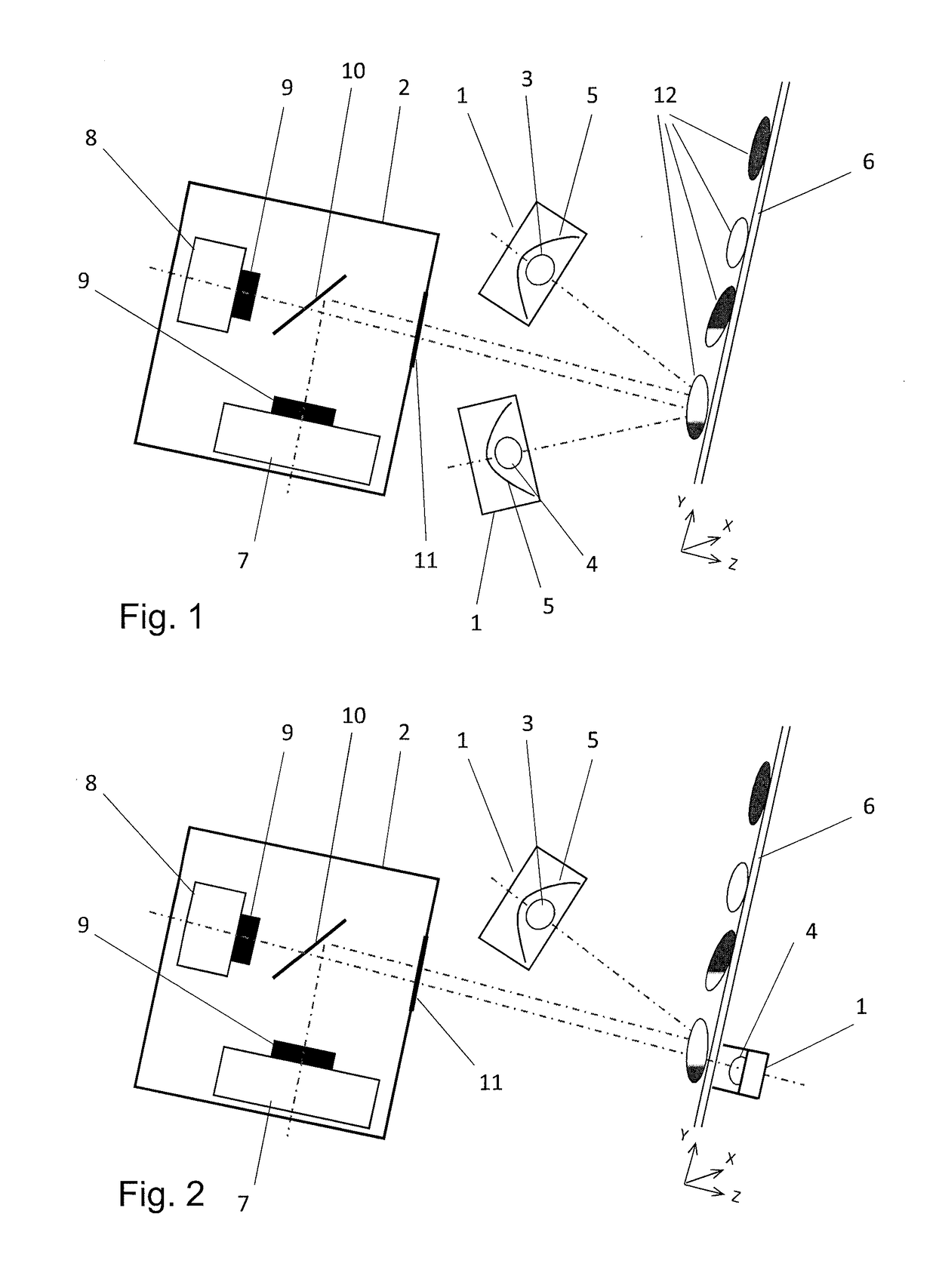Sorting out mineral-containing objects or plastic objects
a technology for plastic objects and mineral-containing objects, applied in the direction of fluorescence/phosphorescence, solid separation, grading, etc., can solve the problems of too expensive and time-consuming industrial sorting, inability to use simple surface color detection,
- Summary
- Abstract
- Description
- Claims
- Application Information
AI Technical Summary
Benefits of technology
Problems solved by technology
Method used
Image
Examples
Embodiment Construction
[0094]In FIG. 1, a UV light source 3 is built into a first housing 1 for light sources and a second light source 4 is built into a second housing 1 for light sources.
[0095]The UV light source 3 here can emit UVC light in the 200 to 280 nm range, in particular with a maximum intensity at a wavelength of 254 nm. The light intensity at the level of the objects 12 can be 1.0 to 1.5 mW / cm2. The UV light source 3 can be made in the form of a UVC light, which is also called a UVC fluorescent lamp or UVC fluorescent tube. However, the UV light source 3 here can also emit UVA light in the 330 to 400 nm range, in particular with a maximum intensity at a wavelength of 366 nm. The light intensity at the point of the objects 12 can be, for instance, 1.0 to 1.5 mW / cm2. The UV light source 3 can be made in the form of a UVA light, which is also called a UVA fluorescent lamp or UVA fluorescent tube. Or, the UV light source 3 can, for instance in the form of a fluorescent lamp or fluorescent tube, e...
PUM
 Login to View More
Login to View More Abstract
Description
Claims
Application Information
 Login to View More
Login to View More - R&D
- Intellectual Property
- Life Sciences
- Materials
- Tech Scout
- Unparalleled Data Quality
- Higher Quality Content
- 60% Fewer Hallucinations
Browse by: Latest US Patents, China's latest patents, Technical Efficacy Thesaurus, Application Domain, Technology Topic, Popular Technical Reports.
© 2025 PatSnap. All rights reserved.Legal|Privacy policy|Modern Slavery Act Transparency Statement|Sitemap|About US| Contact US: help@patsnap.com



